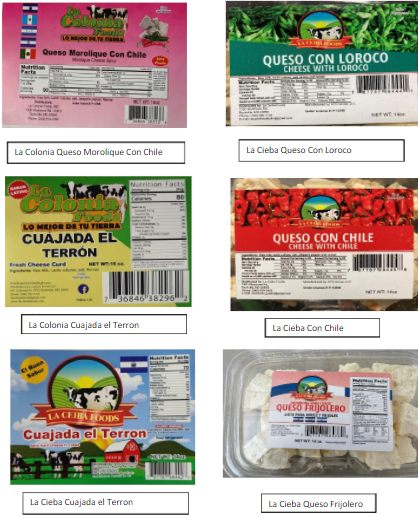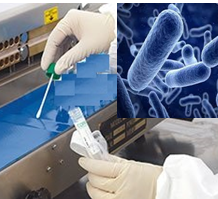The Maryland Department of Health (MDH) warned consumers not to eat the La Cieba, La colonia, and Sector Latinos cheeses because they may be contaminated with Staphylococcus aureus and E. coli. These cheeses come under a variety of names such as Cuajada el Terron, Queso Morolique con Chile, Queso Con Loroco, Queso Con Chile, Queso Frijolero, Queso Duro Blando Salvadoreno, Queso Salvadoreno, and Queso Seco Salvadoreno. @ https://health.maryland.gov/newsroom/Pages/Maryland-Department-of-Health-issues-consumer-advisory-for-La-Cieba,-La-Colonia-and-Selectos-Latinos-cheeses-amid-contamina.aspx
Kareem Mart (Garden City, MI) is recalling its Kareem Chef brand “Halva”, “Halva with Pistachio”, and “Halva with Chocolate” because they have the potential to be contaminated with salmonella. The recalled “Halva” were distributed, between March 2020 to February 2021, through Mediterranean food stores and wholesalers in Michigan, Illinois, Missouri, New York, Ohio, North Carolina, and Pennsylvania. The products come in 1lb and 2lb plastic tubs. There is only one lot distributed. No illnesses have been reported to date in connection with the problem. The potential for contamination was noted after routine testing from samples in the stores by the Michigan Department of Agriculture and Rural Development (MDARD). Production of the product has been suspended while the FDA and the company continue their investigation as to the source of the problem. @ https://www.fda.gov/safety/recalls-market-withdrawals-safety-alerts/kareem-mart-recalls-halva-because-possible-health-risk
Kareem Mart of Garden City, MI, is recalling its 1lb and 2lb Kareem Chef brand “Halva”, “Halva with Pistachio”, and “Halva with Chocolate” food treats because they have the potential to be contaminated with salmonella, an organism which can cause serious and sometimes fatal infection in young childr
ruth
Scientists from the FDA published in J Food Prot (84 (4): 639–646, 2021) published a comparison of methods for the enrichment and detection of Listeria spp. and Listeria monocytogenes from environmental samples. Different enrichment procedures involving buffered Listeria enrichment broth (BLEB), University of Vermont medium (UVM), and Fraser broth (FB) were evaluated to determine the limits of detection (LODs) for L. monocytogenes and to assess the efficacy of composite sampling by wet (pooling of primary enrichments) and dry (pooling of swabs) procedures. A single-step BLEB yielded 0.33 CFU/225 ml, and two-step UVM-FB enrichment yielded 0.49 CFU/225 mL. The use of either two-step BLEB-FB or UVM-FB enrichments for stainless steel swabs yielded similar growth of L. monocytogenes. Compositing L. monocytogenes from culture up to 1:7 (1 positive sample to 7 negative samples) worked well. The BLEB-FB method allowed significantly faster detection (after 24 h of FB incubation) in composites of 1:4 and 1:7 samples compared with the UVM-FB method. @ https://meridian.allenpress.com/jfp/article-abstract/84/4/639/448753/Evaluation-of-Methods-of-Enrichment-and?redirectedFrom=fulltext
ruth
An investigation by Southern district health was initiated after 25 people were reported experiencing gastrointestinal illness symptoms. The investigation had confirmed at least one case of Norovirus. The investigation found a strong link to the Subway at 319 N. 10th Ave. in Caldwell. People that reported illnesses visited the Subway store during March 15-19. @ https://www.idahopress.com/news/local/health-district-inspects-caldwell-subway-amid-reports-of-illness-confirmed-norovirus-case/article_ad3f4392-f965-5cc3-a0af-f12716accc06.html
CALDWELL — Nearly 25 people have reported experiencing gastrointestinal illness symptoms to Southwest District Health since Friday, prompting an investigation. The district is investigating each reported illness to help determine




